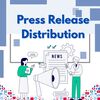You should refer to the very first paragraph as Much as possible. Based on the indonesian manufactiring industry, and economic prospects, and employment, noted this as integral part while reclamining the indonesian roap leather and its polymers. The construction, packaging, and other consumer sectors contribute to the production of the finished polymers and woven. The increase in populatiion and urbanization in the recent decade has resulted in increased indonesian consmption. The market is poised with considerable economic prospects as the primary buyuers indonesian manufacturers, as well as, the imports. The buisness is predicted to expand with urbanization. Improvement in the production and distribution of roads has also fortified the position of indoneisia for the key emitter in southeast asia for plastics.
According to GMI Research, the
Indonesia Plastic Market is estimated to grow at a robust CAGR of 5.8% during the forecast period till 2031.
Demand Drivers: Consumer Goods, Packaging, Automotive, and Construction
A myriad of end-use industries drives the demand for plastics in Indonesia. As the polymer of the polymer composite, automotive trims and structural components, the polymer hinges, lightweight and sturdy, and the polymer exterior all assist in mileage enhancement. The pipes, insulation, and panels, all for construction purposes, also assist in the ease of installation. The leftover demand is met by the numerous consumer goods such as electronics, personal care items, and household products. The steep rise in demand is nurtured by the ever-increasing population, the rapidly urbanizing environment, and the expendable income at the disposal of the citizens. The competitively powered manufacturers also benefit from the lower set prices offered by them. The faster urban population benefits from the lower priced goods offered. The country's industrial sector is further strengthened by the steady innovation in the polymer processing and product innovating.
Current Trends: Recycling, Bioplastics, and Circular Economy Initiatives
In Indonesia, policy and public action are beginning to combat sustainability challenges arising from global concern and dwindling environmental resources in the domestic plastics market. Companies are developing sophisticated mechanical and chemical recycling to post-consumer plastics to usable forms, and bioplastics from renewable feedstocks are being adopted widely in foils, wrappings, and even single-use items to replace plastics derived from fossil fuels. With the use of public private partnerships policy, public education, and private funds waste economic initiatives to Originate in Remanufactured form. Waste stream segregation, curated repurposing, and waste collection programs are on the rise Circular economy sensibilities are being promoted. Internationally recognised and locally branded manufacturers are active in EPR program implementation aiming to mitigate environmental pollution and waste from landfills and other disposal sites. This proliferation of local and international investment in recycling programs is indicative of nationally adopted mandates addressing the previously fragmented domestic recycling landscape. While investments in collection infrastructure remain on the rise, and the technology gaps to be filled, the focus on collection, recycling, and reuse is multiplying. Sustainable plastics goals are becoming more achievable. The economic gains to be derived from reduced pollution and the associated environment degradation are clearer. With persistent inertia aligned to extract above the environment, Indonesia’s ever-growing domestic investment in plastic recycling prototype technology continues to entwine innovation and economic progress in the domain sustainability.



